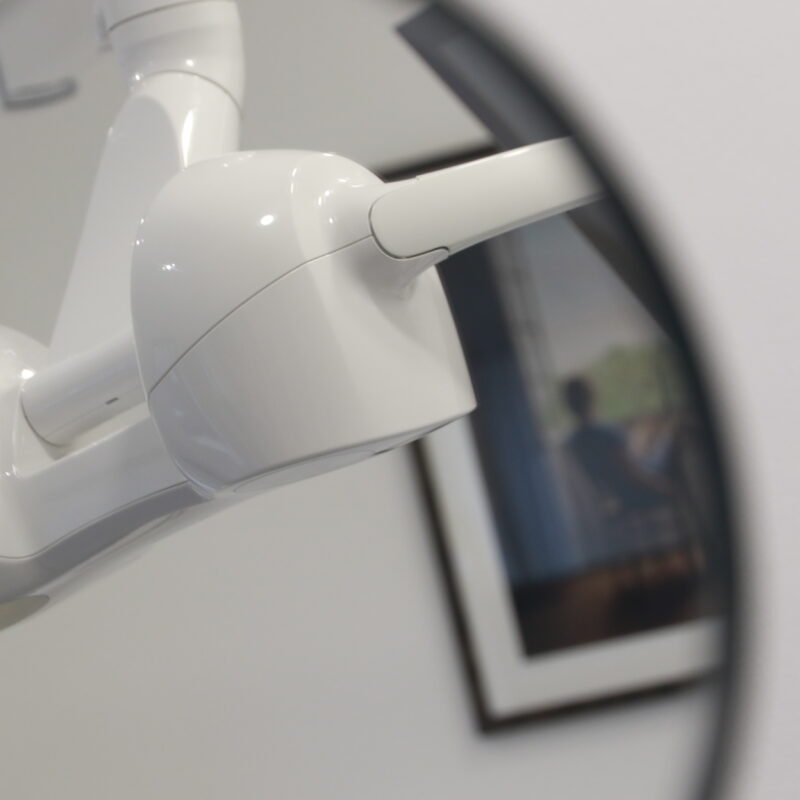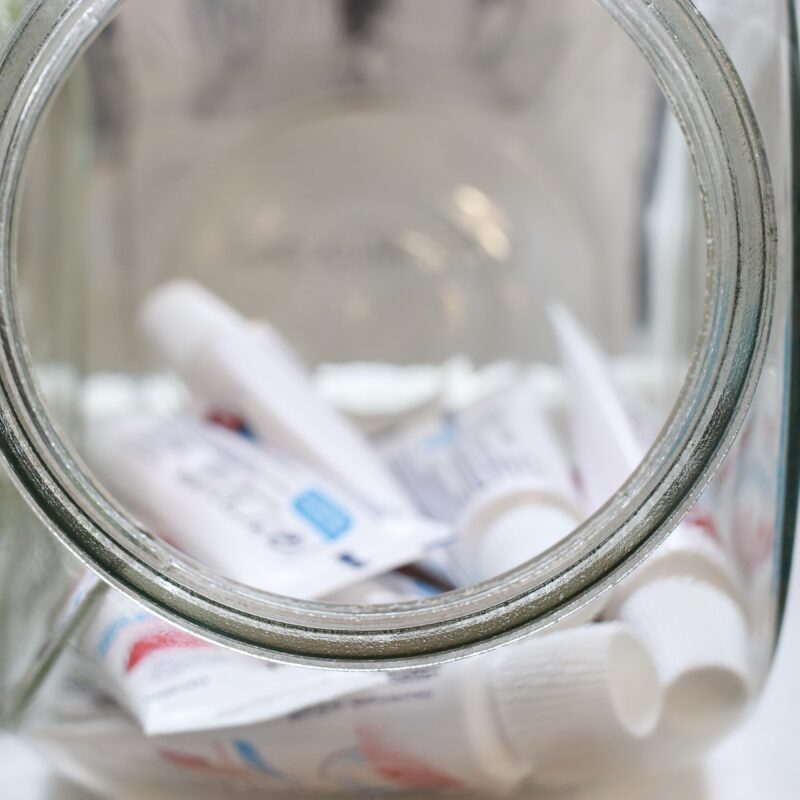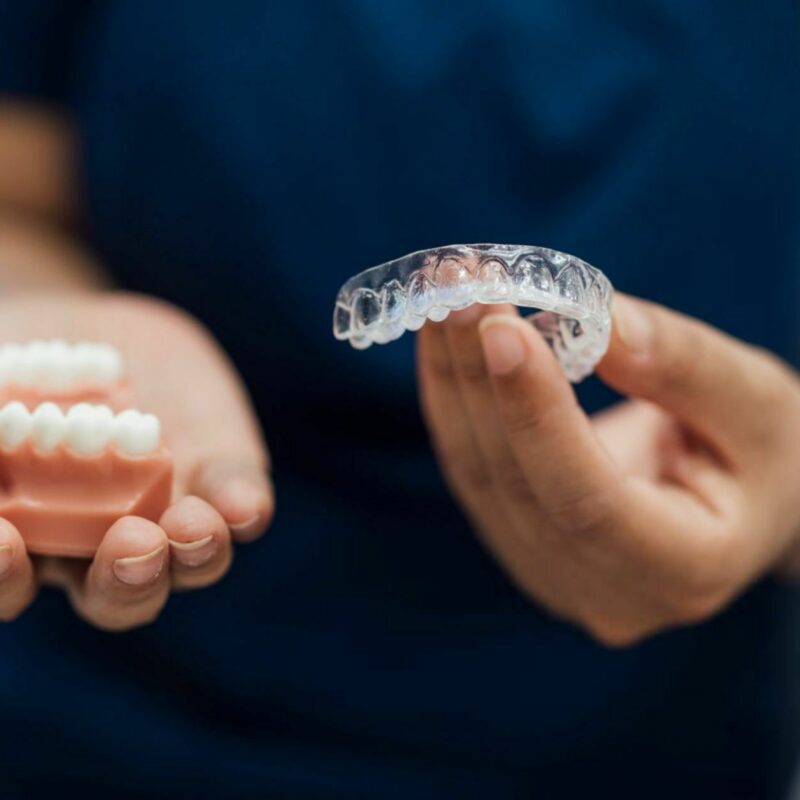Tooth decay, also known as dental caries or cavities, is one of the most common oral health issues affecting people of all ages. Left untreated, it can lead to pain, infection, and even tooth loss. In this blog, we will cover what causes tooth decay, how it progresses, and what you can do to prevent and treat it. We’ll cover the roles of diet, bacteria, and saliva, explain how decay moves through the tooth, and provide insights into the best prevention and treatment options.

What is Tooth Decay?
Tooth decay is the breakdown of a tooth's structure due to acids produced by bacteria in the mouth. It begins with the softening of the tooth's hard outer layer (enamel) and, if untreated, can progress into deeper layers, eventually leading to cavities, pain, and infection.
Basic Structure of Teeth:
In order to understand how decay progresses through a tooth, you should have some understanding of the structure of a tooth.
- Enamel: The hard, protective outer layer.
- Dentine: A softer layer beneath the enamel that is more susceptible to decay.
- Pulp: The innermost part of the tooth, containing nerves and blood vessels.
Aetiology of Dental Caries: How and Why Does It Happen?
Dental caries begins when the conditions in the mouth favour the growth of certain types of bacteria, especially Streptococcus mutans and Lactobacilli. These bacteria thrive on carbohydrates (especially sugars and starches) from the food and drinks we consume. When bacteria feed on these sugars, they produce acids as a byproduct. These acids gradually erode the enamel of the teeth, leading to decay and cavities.
Key Contributors to Dental Caries:
- Plaque Formation: Plaque is a sticky film of bacteria that constantly forms on your teeth. If it’s not removed regularly through brushing and flossing, plaque hardens into tartar, which can further increase the risk of decay and gum disease.
- Acid Production: Bacteria in plaque feed on sugars from your diet, producing acids that demineralise the tooth’s enamel, causing initial, microscopic cavities.
- Saliva: While saliva helps neutralise acids and wash away food particles, reduced saliva production (due to dehydration, medications, serious illness, or medical conditions) can accelerate the decay process.
- Tooth Structure: Natural grooves and pits in the teeth (especially molars) can make it easier for plaque and bacteria to accumulate, increasing the risk of decay in these areas.
How Does Tooth Decay Progress?
Stage 1: Plaque Formation
- After eating or drinking, bacteria in the mouth form a sticky film called plaque on the teeth. These bacteria feed on sugars and starches from food, producing acids.
Stage 2: Initial Demineralisation
- The first stage involves the loss of minerals from the enamel, often appearing as white spots on the tooth surface. At this point, the damage is still reversible with proper fluoride treatment and improved oral hygiene, however the white spots will remain, and possibly turn brown or partially brown.
Stage 3: Enamel Decay
- As demineralisation continues, the enamel begins to break down, leading to the formation of small holes or cavities. Once the decay breaches the enamel, it can no longer be reversed, and treatment is required to prevent further progression.
Stage 4: Dentine Decay
- After penetrating the enamel, decay reaches the softer dentine layer beneath. At this stage, the decay progresses more quickly, living off the organic content of the dentine. You may begin to experience sensitivity or discomfort, especially when eating hot, cold, or sweet foods.
Stage 5: Pulp Involvement
- If the decay continues unchecked, it will reach the pulp (the innermost part of the tooth containing nerves and blood vessels). This can result in intense pain, inflammation, infection, a tooth abscess and possibly a cyst.
Risk Factors for Dental Caries
Several factors can influence your risk of developing dental caries:
- Diet:
- Frequent consumption of sugary and starchy foods, as well as acidic beverages (such as soft drinks, fruit juices, and energy drinks), significantly increases your risk of caries. The more often you consume these foods, the more often your teeth are exposed to acid attacks. It should be clear though that any food or drink apart from still water has a potential to cause tooth decay. Some foods clearly have higher decay causing potential, such as sweets, but there is still a hierarchy. As an example, sticky sweets, such as toffees, will have a higher decay risk as they tend to stay in the mouth for much longer.
- Poor Oral Hygiene:
- Inadequate brushing and flossing allow plaque to build up, providing a breeding ground for harmful bacteria. Skipping dental check-ups and visits to the hygienist also increases your risk, as early signs of decay can be missed, and you miss the opportunity to have clean teeth and so reduce the bacteria and plaque on your teeth.
- Saliva Flow:
- Saliva acts as a natural defence mechanism by washing away food particles and neutralising acids. Minerals in saliva are also essential for any repair of decayed enamel - without saliva this early remineralisation cannot happen. Reduced saliva production (xerostomia) can increase your risk of decay. This condition can be caused by dehydration, medications (e.g., antihistamines, antidepressants), habits, such as smoking or drinking coffee and alcohol, medical conditions such as Sjögren’s syndrome, or with serious illnesses such as after radiation therapy for head and neck cancers. With a dry mouth, bacteria forming dental plaque adhere more readily and more firmly to teeth.
- Medical Conditions:
- Conditions like diabetes, which affect immune function and healing, can increase the risk of dental caries. Patients undergoing radiation therapy to the head and neck are also at higher risk due to decreased saliva production.
- Oral Appliances:
- Braces, retainers, dentures, or bridges can trap food and bacteria around the teeth, making it more challenging to maintain proper oral hygiene.
- Lifestyle Habits:
- Smoking, vaping, coffee and alcohol consumption contribute to dry mouth, making it easier for bacteria to thrive. Stress can also affect oral health by influencing dietary choices and leading to teeth grinding (bruxism), but also reducing saliva flow rates.
- Gum Disease:
- Gum disease can lead to gum recession, exposing the roots of teeth, which are vulnerable to rapid progression of tooth decay - known as root caries (or root decay). Where there is root caries, unless detected quickly, the tooth can become painful or unrestorable in a short space of time - less than 6 months.
Is Tooth Decay Painful?
Tooth decay can cause varying degrees of discomfort depending on its stage:
- No Pain: Early-stage decay in the enamel usually causes no symptoms.
- Sensitivity: As the decay extends deeper into the dentine, you may feel sensitivity to hot, cold, or sweet foods and drinks, but the symptoms may be very mild or unnoticeable.
- Pain: Once the decay is deep within the tooth or if the pulp is involved, the pain can become severe, constant, and may even radiate to your jaw or ear. You might also experience swelling if an abscess forms. Oddly, some people still experience little pain, even at this stage.
Symptoms of Dental Caries
- Visible Holes: Small pits or holes in the teeth may become visible as decay progresses.
- Discolouration: Decay can cause brown, black, or white spots to form on the surface of the tooth. There may also be shadowing within the tooth - a typical sign that the decay has extended deeper into the dentine. Where the whole tooth is discoloured, it may be that the nerve of the tooth is now involved.
- Tooth Sensitivity: Sharp sensations when consuming hot, cold, or sugary items.
- Broken or Cracked Teeth: Weakened teeth may break or chip, leading to sharp edges and further discomfort.
- Food Trapping: where there are cavities between the teeth, you may start to find that food traps on a more regular basis
- Bad Breath: Bacteria from decay can produce foul odours, leading to persistent bad breath.
- Pain: Severe or constant tooth pain, especially when biting or chewing.
- Difficulty in Eating: A symptom may be that as the teeth are broken down, and perhaps you chewing in avoid certain areas of your mouth to avoid discomfort, you may then find it is harder to chew your food
- Odd bite or Uneven teeth: You may find that as teeth break down, the opposing upper or lower tooth may shift position and you may start to notice an unevenness in the height of your teeth or that some teeth catch your tongue or cheek or another tooth in an odd way when you are trying to chew.
Preventing Dental Caries
To have dental caries or tooth decay, you need a tooth (!), you need plaque, or bacteria, and you need a food source. If you remove or disrupt one of the three, your risk of dental caries reduces. Clearly you don;t want to remove your teeth (an extreme way to prevent tooth decay!), but you can remove or disrupt the plaque (oral hygiene and fluoride treatments), you can make the tooth more difficult for the plaque to adhere to (fissure sealants) and you can remove or reduce the food source for the bacteria (diet).
Prevention is therefore an easy and key factor in managing dental caries. Here is more detail on effective strategies to reduce your risk:
1. Oral Hygiene:
- Brush Twice Daily: Use fluoride toothpaste to strengthen enamel and help prevent decay. Brush for at least two minutes, focusing on all surfaces of the teeth. You should brush first thing in the morning, before eating breakfast and last thing at night before going to bed. If you are at risk of tooth decay then you should spit out and not rinse out or rub toothpaste into your teeth and leave it there overnight. There are lots of different types of toothbrushes. A manual toothbrush is perfectly fine - a small head with soft bristles should do. However manual toothbrushes are not as easy to use as electric toothbrushes.
- Interdental Cleaning Daily: Flossing removes plaque and food particles between teeth that your toothbrush can't reach, however studies show flossing is very technique sensitive and most people aren’t very good at it. Interdental brushes are easy to use, and can be used as a stand alone, but better in combination with floss - the floss clears through the contact point between the teeth, and the brush picks up the debris and pushes it out. The brushes can be dipped in fluoride toothpaste and this will apply the toothpaste directly into one of the areas of the teeth most vulnerable to tooth decay. Water picks are more common place and also quite easy to use, however these should be used as an adjunct or where you are physically not able to floss or use an interdental brush.
- Use Mouthwash: Alcohol-free fluoride mouthwash can help reduce bacteria and strengthen enamel, especially for individuals with dry mouth. Daily mouthrinses are better as if you miss a day or two, there’s not too much loss in the benefit, however with weekly rinses, if you miss a week or two, the loss of effect will be more considerable. Usually little and often is more effective.
2. Diet and Nutrition:
- Limit Sugary and Starchy Foods: Avoid frequent snacking on sweets, crisps, and sugary drinks. The more often your teeth are exposed to sugar, the greater the risk of decay.
- Reduce or Eliminate Snacking: As above, though, it is not
- Drink Water: Water helps wash away food particles and bacteria, and it’s especially important to stay hydrated if you suffer from dry mouth.
- Chew Sugar-Free Gum: Chewing gum after meals stimulates saliva production, helping neutralise acids and wash away food particles.
3. Fluoride Treatments:
- Fluoride Toothpaste: Use fluoride toothpaste containing at least 1,350 ppm fluoride. Some toothpastes for people who have high risk of dental decay are available on prescription - Duraphat 2800 and Duraphat 5000
- Fluoride Mouthrinses: there are lots of mouthrinses on the market, but if you have tooth decay, you only need an alcohol free high fluoride content mouthrinse.
- Professional Fluoride Treatments: Your dentist can apply fluoride varnish to protect teeth, especially if you are at high risk of decay.
4. Dental Sealants:
- Fissure Sealants: These are protective coatings applied to the chewing surfaces of molars to prevent decay from developing in deep grooves and fissures.
Arresting and Decreasing Caries Risk
Can Dental Caries Be Reversed?
- Early Stage: Yes, dental caries that hasn’t penetrated the enamel can be reversed through remineralisation. This involves using fluoride treatments, improving oral hygiene, and making dietary changes to halt decay progression. There may still be a microscopic or macroscopic cavity in the enamel (known as arrested caries), and a white or brown spot may still be visible.
Reducing Caries Risk:
- Saliva Production: Stimulate saliva production by drinking water, chewing sugar-free gum, and addressing any habits, medical conditions or medications that reduce saliva flow.
- Dietary Changes: Reduce the frequency of sugar intake and opt for non-cariogenic snacks like cheese, nuts, and fresh vegetables. Reduce or eliminate snacking altogether, and condense food consumption to three meals a day.
- Regular Dental Visits: Attend dental check-ups every six months (or more frequently if advised) for cleanings and early detection of any decay.
- Topical Fluorides: As discussed above, fluoride toothpastes and mouthrinses are essential.
- Fissure Sealants: again, as detailed above.
Restorative Options for Treating Caries
When dental caries is detected and can no longer be reversed, restorative treatment is necessary to preserve the tooth structure.
1. Fillings:
- Small cavities can be repaired with a filling made of composite resin (tooth-coloured material), amalgam (silver), or glass ionomer cement. Amalgam is seldom used these days, primarily for contamination of the water system and due to toxicity concerns in people.
2. Inlays and Onlays:
- For larger cavities that cannot be repaired with a simple filling, inlays and onlays (custom-made restorations) can be bonded to the tooth. Inlays and onlays are usually made of ceramic, but can be made of filling material or metal, such as gold alloys or non precious metal alloys. This is usually a two step process - preparing the tooth after removing the decay, taking impressions (usually digital) and sending the information to a laboratory. The laboratory constructs the restoration, which is returned a week or two later to the treating dentist, who will adhere the restoration in place.
3. Crowns:
- If a large portion of the tooth is decayed or damaged, a crown (a tooth-shaped "cap") may be placed to protect the remaining tooth structure. Again this is a two step process as described above.
4. Root Canal Treatment:
- If decay has reached the pulp, a root canal will be required to remove the infected tissue and save the tooth. After treatment, a crown is usually placed to protect the tooth.
5. Tooth Extraction:
- In cases of severe decay where the tooth cannot be saved, extraction may be necessary. Replacement options like bridges, dentures, or dental implants can then be considered.
What Happens if Tooth Decay Is Not Treated?
Untreated dental caries will continue to progress, leading to:
- Tooth Pain: Pain may become constant and severe, interfering with eating and daily activities.
- Infection: Decay that reaches the pulp can cause an abscess, leading to swelling, pus formation, and potentially spreading infection to other parts of the body. Teeth and dental infections have been shown to be an increasingly common source of sepsis, which is life threatening.
- Tooth Loss: Eventually, the tooth may become so damaged that it cannot be saved and will need to be extracted.
- Overall Health Risks: Chronic dental infections can increase the risk of systemic health issues, such as heart disease, diabetes complications, and respiratory infections.
The rate of progression varies between individuals and within individuals as habits can change. Sometimes a tooth may be rendered unrestorable in 6 months, root caries may take less time, but others are more lucky and the decay may take longer to progress to a position where the tooth cannot be restored.
Long-Term Management and Prevention
Preventing further dental caries requires a multi-faceted approach that includes ongoing care, lifestyle changes, and regular monitoring.
Medium to Long-Term Strategies:
- Regular Dental Visits: More frequent check-ups and x-rays are necessary to monitor at-risk areas and catch early signs of decay.
- Improved Oral Hygiene: Continue to brush twice daily with fluoride toothpaste and floss daily.
- Dietary Adjustments: Limit sugary snacks and beverages, and focus on non-cariogenic foods.
- Saliva-Stimulating Treatments: If you suffer from dry mouth, your dentist may recommend saliva substitutes or medications to improve flow.
- High Fluoride Adjuncts: fluoride toothpaste, mouthrinses, and tablets can be very effective.
Take Control of Your Dental Health
Dental caries can be a serious issue if left untreated, but with the right preventive measures and treatments, you can maintain a healthy smile for life. Regular visits to the dentist, combined with good oral hygiene and a healthy diet, are key to reducing your risk of decay. If you're concerned about tooth decay, don’t hesitate to consult your dentist—they can assess your individual risk and help you develop a personalised prevention and treatment plan.
More
from the blog
Blog /Advice
Is High-Fluoride Toothpaste Safe?
Benefits, Risks, and How It Protects Against Tooth Decay
Read moreBlog /Advice
Nutritional Effects on Oral Surgery Outcomes
Preparing Your Body for Faster Recovery
Read moreBlog /Advice
PRF facials - Platelet-Rich Plasma
Learn how platelet-rich fibrin treatments naturally restore youthful skin
Read more





